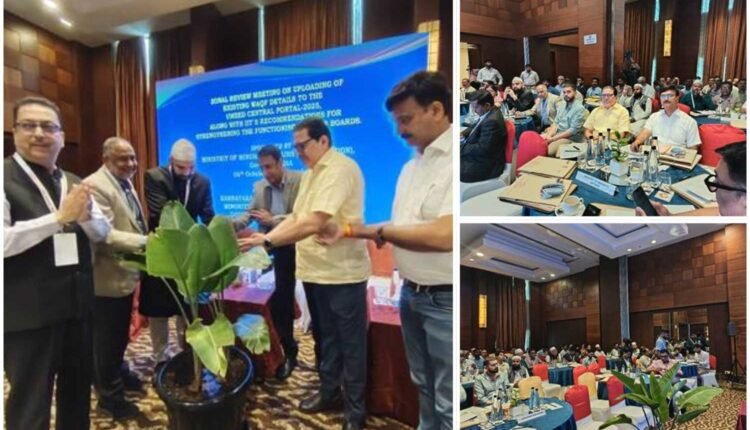New Delhi: Bengaluru hosted a zonal review where the Ministry of Minority Affairs met Waqf Boards from Karnataka, Tamil Nadu, Andhra Pradesh, and Telangana to assess the UMEED portal. The platform—Unified Waqf Management, Empowerment, Efficiency, and Development—anchors digital modernization across boards.
Launched in June 2025, the UMEED portal carries a clear requirement: upload all Waqf property details within six months. States confirmed that uploads have begun. Moreover, they will accelerate entries through dedicated teams, standard templates, and early reconciliation of legacy files.
Key discussions focused on efficient management, progress tracking, and clarity on asset ownership. States urged regional language support to widen adoption among field officers and clerical staff. Ministry officials agreed and said multilingual interfaces will roll out in phases to support diverse users.
UMEED portal to pair clean data with training, timelines, and dashboards
Officials also promised usability upgrades in the coming days. They will refine forms, simplify validations, and add help text. Additionally, training sessions will align with upload milestones so teams can improve speed without losing accuracy.
Karnataka and other southern states shared status updates on Waqf Board activities, including verification exercises. Therefore, states can compare progress transparently and resolve operational bottlenecks quickly. The Ministry emphasized that dashboards will highlight gaps and successes at district level.
The work proceeds under the UMEED Act, 2025, which took effect in April. The Government of India aims to modernize Waqf administration and unlock the developmental potential of Waqf properties for minority communities. Consequently, the UMEED portal will standardize identity, location, ownership, and utilization records nationwide.
Standardized datasets support better planning, quicker dispute resolution, and stronger public trust. Furthermore, a central view allows authorities to spot underused assets and design projects for education, health, and community welfare. As a result, digital governance can translate into tangible impact.
The Bengaluru meeting ended with targets for monthly uploads, language rollout, and support channels. In short, stakeholders committed to turning a policy platform into everyday practice that benefits people on the ground.

